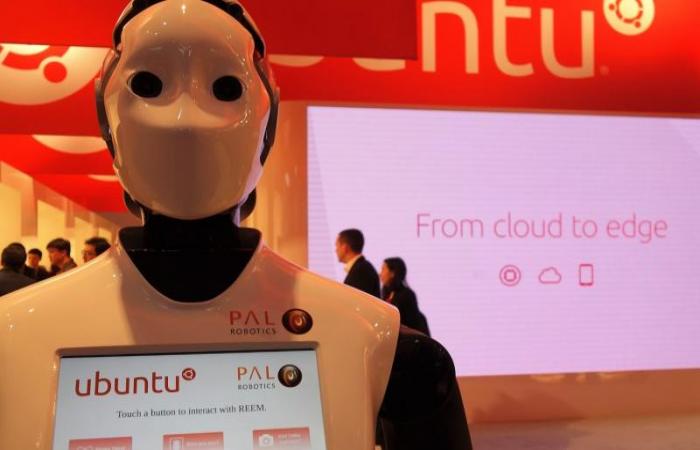Mobile World Congress 2017: Observations Regarding The Main Enterprise Themes

Recently, the largest annual get together of the mobile industry, Mobile World Congress (MWC) took place in Barcelona. In my opinion, the biggest themes at MWC in 2017 that are relevant for enterprise customers were the internet of things (IoT), artificial intelligence (AI), platforms, collaboration, and connectivity. These themes underline how mobility is becoming part of the broader digital transformation initiative. I discuss this shift in this separate blog and report. MWC provided several valuable insights for business and technology leaders to align their mobile to their digital strategies:
-> Not everything that claims to be AI is true AI. Many vendors that claimed during MWC to be AI-proficient are in fact able to deliver true machine-learning solutions to generate transformative customer and operational insights. Most solutions that were branded as AI at MWC rely on preprogrammed responses and statistics rather than machine learning.
What it means for the CIO. Only a handful of large global players are positioned to deliver AI capabilities like natural language processing, machine learning, video and image analytics, and text analytics today and in the near term for enterprise customers. Moreover, because AI is ultimately a big data story, CIOs need to decide which data sets could be crunched in a central data center and which ones must be handled on the edge for performance reasons via multi-access edge computing.
-> IoT is still in the growing-up phase. The potential for asset performance management, digital twins, digital threads, and model-based systems engineering is generating tangible results from digital initiatives. For instance, Scania highlighted that it manages to generate already about 8% of its revenues via value-added services from an Ericsson-powered IoT solution. At the same time, every vendor we spoke to emphasized that it is still early days for IoT implementations in a digital context.
What it means for the CIO. IoT is about multivendor landscapes, ecosystems, and big data. Therefore, the CIO needs to plan for the integration of IoT data from other vendor platforms, decide how to integrate context data like weather, and define how to integrate with exiting enterprise and cloud systems. Moreover, IoT for manufacturing focuses on cognitive processes and operations as well as smarter processes and optimization.
-> Business platforms become important building blocks for value creation. Platforms were pitched at MWC as critical building blocks for instant, near zero marginal cost, and omnidirectional information exchange and tool development — and the basis for AI-based initiatives. Platform vendors come from all backgrounds including IBM’s Watson IoT or SAP’ Clea, Huawei’s Ocean Connect, Nokia’s Wing, or Cisco’s Jasper and Tata’s Move.
What it means for the CIO. Platforms help CIOs to support business leaders with process-focused service level agreements, risk management, security, deployment support, geography-specific solutions, and systems integration. Moreover, the stakeholder dynamics within platform ecosystems that either use or provide business platforms become much more complex.
-> Collaboration and communication lubricates the digital transformation engine. Digitalization brings with it the objective by many end user businesses to shift from selling products via third parties to selling services directly to consumers. Some vendors at MWC addressed this shift by offering services to protect customer privacy, such as Telefonica’s 4th platform approach. Omnichannel did appear as a theme at MWC, but is, unfortunately, far from being seen as a central tool to drive customer-satisfaction.
What it means for the CIO. The CIO ought to support cooperation in a complex ecosystem environment through service orchestration and not control. In the manufacturing context, every engineer in a hyper-collaborative world has to understand exactly which part of the design they are responsible for. For call center agents and maintenance advisors, AI will deliver customer insights. Retail workers will benefit from store management dashboards on mobile devices. Suppliers must work in lock-step with manufacturers in an open development process while collecting and channeling real-time customer feedback back into their ecosystem’s product development cycle.
-> Connectivity is not all out hyper bandwidth. The 5G hype has picked up noticeably compared with Mobile World Congress 2016. No doubt, technological progress has been made since then as can be seen at countless vendor booths. However, the business case rationale for 5G investments is not much clearer beyond a handful of well-known scenarios. Of course many mobility solutions that involve multimedia are bandwidth hungry. Yet, at the same time, many IoT solutions, like metering, alerts, or tracking will only require very low but energy and cost efficient data transmission.
What it means for the CIO. Industrial robotics, virtual and augmented reality, and autonomous cars all require high-bandwidth, high-connectivity reliability and low latency that 5G promises to deliver. However, these services are not yet widespread and do not translate into a requirement for a nationwide coverage of 5G. Moreover, the 5G standard is still emerging. Forrester believes that there will be a wide range of mobile broadband technologies and architectures that will coexist. 5G will be a complementary connectivity option for most use cases.
You can listen to a summary in a Webinar: Feedback, Reflections, And Opinions On The Mobile World Congress 2017.
